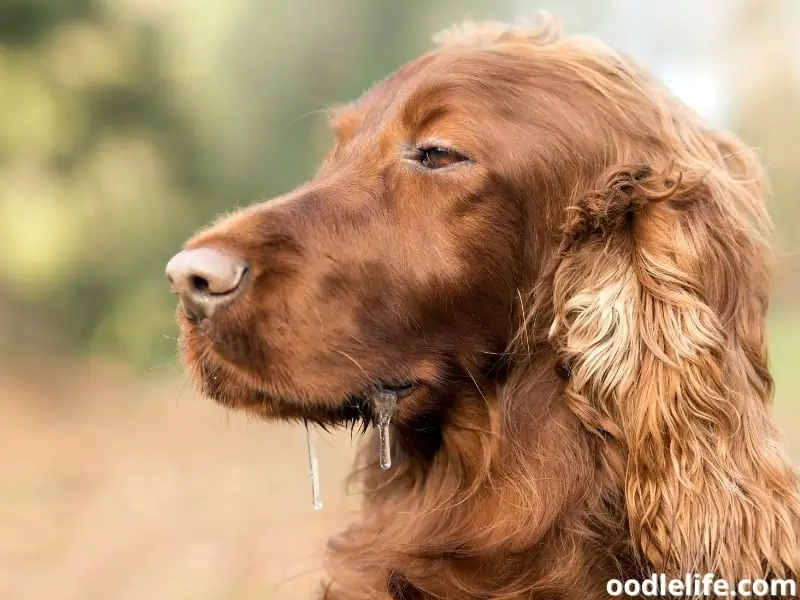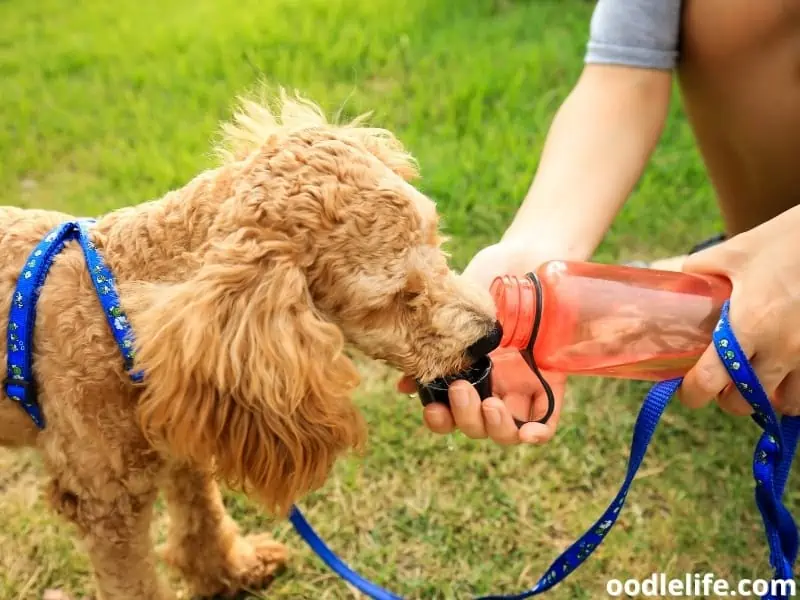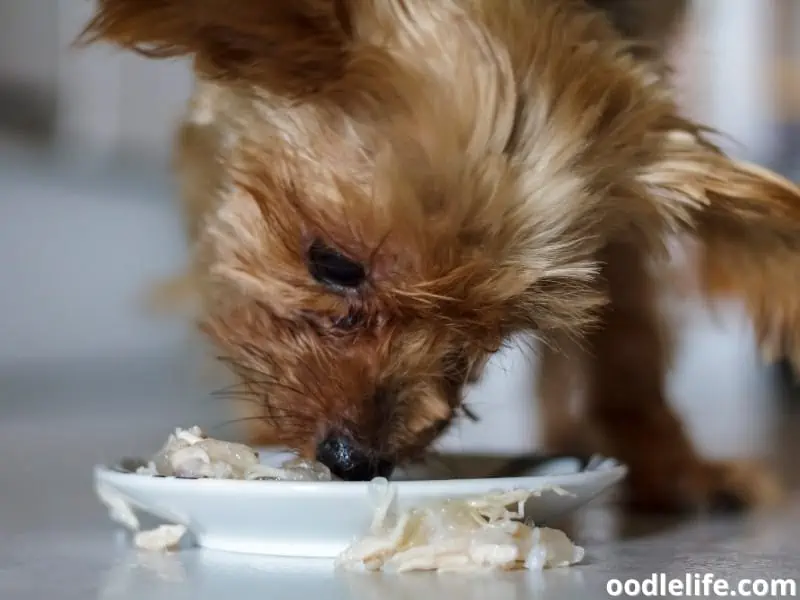How Long Can a Dog Go Without Water? 💧 (Facts)
If you’re new to caring for a dog, or you just got a dog and have questions like how frequently your dog should drink water? How long can they go without water? etc. Read on, as this article will answer all your questions.
First, you need to understand that as with every living creature food and H2O (water) are very essential for survival. However, how important both essentials are, varies across humans and animals. How’s that?

Let’s find out.
How Many Days Can a Dog Go Without Water?
No living creature can survive without access to a clean and adequate water supply. Anyone can barely survive without the right amounts of water in their system.
For the vast majority of humans, water makes up 70-80% of their being. It is the primary component for all healthy cells, and we can’t just last long without it.
Based on empirical evidence, it has been observed that humans can stay up to 3 weeks without eating food, however, their abstinence from water cannot exceed a one-week threshold. Our canine pals, on the other hand, can typically go only up to a week without food and about 72 hours (3days) without water.
Nevertheless, you should not subject your pet to dehydration on purpose, or not provide access to an adequate supply of water, because they can survive without water for three days.
As a result of the fact that dogs have smaller structures and are typically not as big as humans, their organs are far more sensitive than ours. Therefore the dehydration level can barely stretch beyond 3days.
Inadequate access to water can completely halt the functionality of your dog’s vital organs, and make them so weak. And put them on the brink of death sometimes.
By that token, it’s very vital to keep your dog well hydrated at all times. This is important for your pooch to function at the top of its ability and ward off any dehydration-related health issues.
Nonetheless, there are cases where dogs go without water, which can be due to specific health issues. In situations where your dog refuses water amen because he is ill, you should still devise means like feeding him well to ensure adequate fluid in your dog.

Can A Dog Survive Without Water for More than 5 hours?
Maybe you’re new to dog caring and you also work a 9-5 job. In the process of trying not to be late for work, cleaning and filling up your pup’s water and food bowl skips your mind, and you begin to panic if he’ll survive before you get back home.
Well, there’s no need to panic so much about that. Your dog can stay 8 hours or more without food and water. Although the threshold for staying without water is strictly at 3 days, after 24 hours without enough water, your dog might begin to feel weak and show signs of dehydration.

Dangers of Inadequate Access to Water for Your Dog
Having established that the most important body functions of your dog require water. Let’s go ahead to see the things that are likely to happen if your dog doesn’t get access to enough water.
Firstly, without an adequate supply of fluid in your dog, your dog can quickly become dehydrated.
Eventually, his organs will become damaged with extended water deficiency, and if this lasts long enough, the kidneys, liver, and other organs will begin to shut down. And at this point, death will be inevitable.
Generally, a healthy dog will drink enough water daily to stay well hydrated, but there are a few instances where dehydration can occur, due to a dog’s Illness.
Dogs can also be at increased risk of dehydration as a result of ailments like; kidney failure, metabolic disorders (such as diabetes), or cancer.
Also, pregnant/nursing dogs are at risk of becoming more dehydrated, since they may have higher needs.

Signs That Your Dog Is Dehydrated
There are several signs you can look out for that points to the fact that your dog is probably dehydrated, whether as a result of not filling the bowls with water one too many times, or your dog’s refusal to drink up, the following points to dehydration in your dog signs;
- Their gums become dry and sticky.
- Thick and pasty saliva.
- Loss of appetite.
- A dry nose.
- Sunken eyes or shock and collapse in extreme cases.

Ways to Ensure Your Dog Has Adequate Access to Water
Dehydration can be easily avoided if your pet is getting the proper intake of fluids every day. You can help your pooch get its adequate fill of water with these helpful tips:
Make sure you use the right size of water bowl.
When you don’t fill up water for your pup in the right bowl, it might be a total turn-off for your dog. Imagine your adult dog trying to drink from a bowl size for little puppies that’ll be uncomfortable right?
In general, the size of your pet’s water bowl is largely determined by the size of your dog. By this token, you should make sure your pooch can properly drink from the bowl it uses.

Always make sure your dog’s water bowl is filled.
You can create a routine for getting your dog’s water bowl filled regularly. In the same vein, you should pay more attention to their liquid intake, especially when they take dry foods like kibble.
Put water in different areas of the house.
Even when your pet is playing around the house, you can position water fills around the places he goes to play the most.

Always keep your toilet seat closed.
It’s funny but dogs tend to dip their mouths into different things they see around the house. As a result, you should ensure that your toilet seat is always closed. This will help keep your canine from popping its head inside and drinking toilet water.
This act can be harmful to your gorgeous pet, as they can easily contract bacteria from toilet water.
Feeding your dog with wet food.
Your dog can equally stay hydrated when you feed it with wet food often. Wet foods have more water content than other types of food.
Always go with enough water for outdoor activities.
Dehydration in dogs mostly happens during long car rides, exercises, or long strolls. Your dog must get enough water especially if he is always engaged in one activity or the other.

A cool treat can do the trick.
Did you know that dogs enjoy eating ice cubes? Iced fruits like watermelon or cantaloupes are handy treats that you can easily give your dogs even when you’re not home. So the next time you hit the road with your pal, be sure to go with your prepared fruit cubes.
Reasons Your Dogs Drink Lesser Water Sometimes
Besides the fact that when your dog is sick from underlying health issues or has mobility or pain issues, they would drink less amount of water than they need (if that’s the case, you should talk with your veterinarian).
Below are the most common reasons your dog eats less water than they should normally consume.
Exhaustion from exercising activities.
The amount of exercise your dog is trained with largely determines the amount of water intake. This is because, just like humans, dogs can lose lots of water when engaged physically. On the other hand, dogs that expend less energy, might not drink a lot of water like the former.

When your dog is eating a homemade diet or wet food.
Dogs that are mostly fed with canned food or a homemade diet receive some moisture through their food. Because these foods are about 65-80% water. As a result, your dog might drink less compared to when your dog feeds on dry kibble daily.

The Amount of Water Your Dog Should Drink Daily
The American Kennel Club’s findings postulated that a healthy dog should drink between 0.5 to 1 ounce of water each day for each pound of body weight. As a result, breeds like Labradors that weigh 70 pounds should drink around 35-70 ounces of water per day.
However, these might vary based on size, age, and activity level. Growing pups, despite their smaller size, tend to drink more than their adult counterparts.
Nonetheless, several factors contribute to the quantity of water your dog drinks. So unless directed by the vet, it is not necessary to measure out exact water amounts for your pet to drink. Just make sure that your dog has enough clean water to drink every day.

Conclusion
Generally, the perfect rule of thumb here is to ensure that your dog has an adequate supply of water daily. On days you forget to fill up your pet’s bowl, make sure to make up for that on other days. We hope you find this useful.
